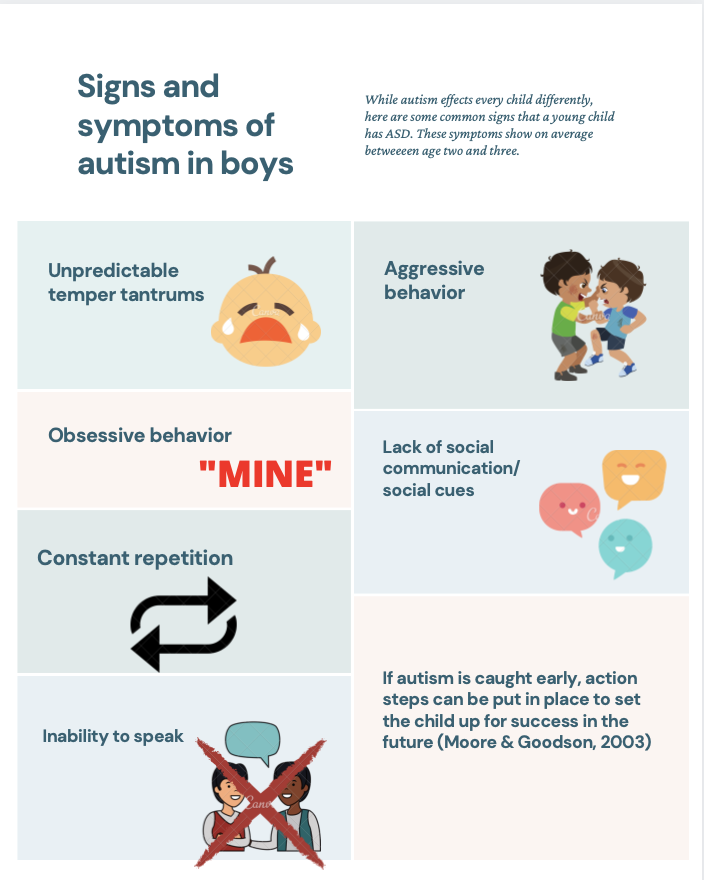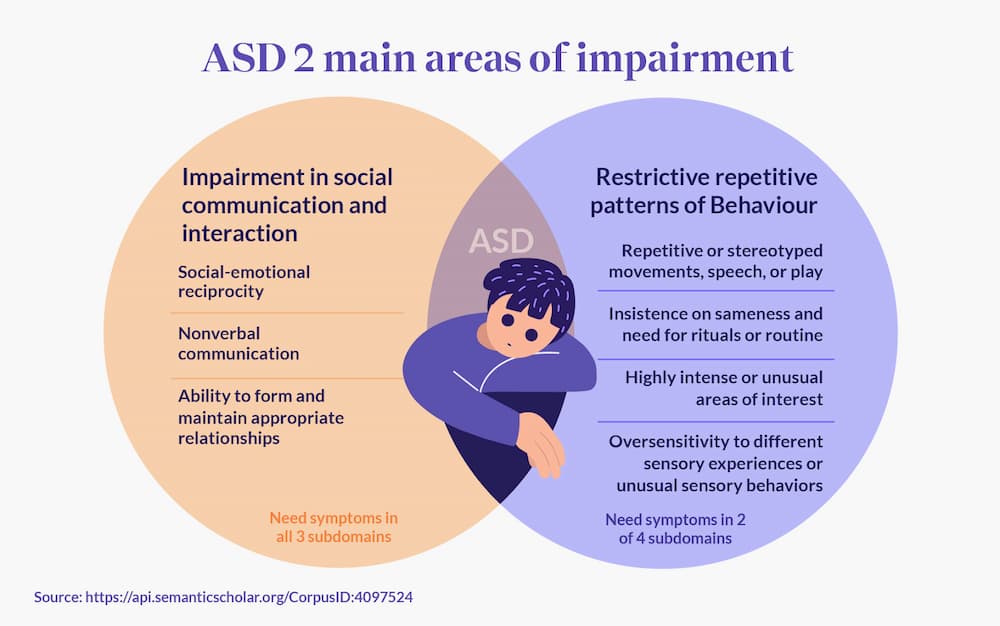Developing real connections with help from an Autism Therapist
Wiki Article
Understanding the Impact of Behavioral Autism on Day-to-day Live and Social Interactions
You may not understand just how deeply behavior autism impacts everyday life and social communications. Individuals on the spectrum typically browse a world filled with communication hurdles and sensory overload. These obstacles can lead to disappointment and seclusion, affecting their relationships and overall wellness.Defining Behavioral Autism and Its Qualities
Behavior autism, usually referred to as autism range disorder (ASD), encompasses a range of problems defined by challenges in social communication, communication, and repeated actions. You might discover that people with ASD frequently have a hard time to interpret social cues, which can result in misconceptions in conversations. They might discover it hard to develop eye contact or involve in tiny talk, making social circumstances feel frustrating.Interaction difficulties can show up in numerous methods, from delayed speech development to a preference for utilizing fewer words. By identifying these characteristics, you can promote a setting that promotes acceptance and encourages efficient communication, assisting individuals with autism grow in their daily communications.
The Range of Autism: Comprehending Variability in Habits
Autism spectrum condition (ASD) isn't a one-size-fits-all diagnosis; it varies widely among individuals. You could discover that some people with ASD show mild symptoms, while others might deal with extra considerable obstacles. This variability can materialize in actions, rate of interests, and sensory level of sensitivities. You may experience people who are extremely spoken and involve quickly in discussions, while others might favor singular tasks or interact non-verbally.Moreover, the way individuals with ASD react to sensory input can vary considerably; some may be bewildered by bright lights or loud sounds, whereas others flourish in boosting environments. The range additionally includes differences in social communications; some people may struggle to translate social signs, while others navigate social setups with family member simplicity. Recognizing this irregularity is important, as it assists you value each person's distinct experience and dressmaker assistance to their specific demands, cultivating a much more inclusive environment for every person.
Communication Challenges Encountered by Individuals With Autism
When you communicate with individuals on the autism spectrum, you may observe their special communication obstacles. They often deal with difficulties with both nonverbal and verbal cues, which can impact their social communications. Understanding these barriers is vital for cultivating better links and support.
Verbal Interaction Problems
Numerous people on the autism spectrum experience spoken communication difficulties that can significantly influence their day-to-day communications. You might find it challenging to reveal your ideas, sensations, or requires plainly. This can bring about irritation for both you and those around you, as misconceptions take place. You may battle with initiating discussions, keeping a topic, or recognizing subtleties in speech. Often, you could choose utilizing basic language or recurring phrases, which can restrict your ability to participate in deeper discussions. Your tone, speed, or volume might not line up with social assumptions, creating others to misunderstand your purposes. Identifying these difficulties can help you and your support network develop techniques to boost communication and foster much better connections with others in your every day life.Nonverbal Interaction Barriers
Verbal interaction isn't the only difficulty people on the autism range face; nonverbal interaction obstacles can be just as significant. These obstacles can lead to misconceptions or misconceptions of social cues, making interactions really feel complicated or overwhelming. By attending to nonverbal communication, you can find strategies to improve your social experiences and improve your total high quality of life.Social Interaction Effects
Social communications can typically really feel overwhelming due to the unique communication difficulties encountered by individuals with autism. You could deal with interpreting social hints, making it difficult to comprehend sarcasm or body movement. This can cause misconceptions or uncomfortable minutes in conversations. Additionally, starting and keeping discussions might really feel difficult, triggering anxiousness in social scenarios. You might favor organized atmospheres, making spontaneous communications unpleasant. It's additionally common to experience problem in taking part in little talk, which can hinder forming brand-new relationships. Identifying these difficulties can assist you find strategies to enhance communication, such as exercising social skills in secure setups or using aesthetic help - Autism Behavioral Therapy. Understanding your requirements allows you to browse social interactions with greater self-confidence and simplicity.Social Interaction and Relationship Structure in Autism
While building relationships can be testing for people with autism, recognizing their one-of-a-kind point of views and communication designs can foster purposeful connections. You could discover that several individuals on the range prefer direct communication and might deal with social cues or small talk. By being straightforward in your interactions, you can aid create an environment where they feel comfortable.Take the time to observe and listen exactly how they share themselves. This understanding can guide you in guiding discussions much more properly. Taking part in shared interests can likewise function as a bridge to much deeper connections. Whether it's a pastime, a favored program, or a common passion, these typical threads can open doors to relationship.
Every Day Life Routine: Navigating Obstacles and Methods
Navigating every day life regimens can be particularly challenging for individuals with autism, especially when unexpected changes occur. You may discover comfort in having a structured schedule, as it assists you anticipate what's following. When disturbances take place, it's regular to feel distressed or overloaded. To navigate these challenges, think about implementing aesthetic schedules or lists. These tools can supply clearness and peace of mind.Developing a regimen that consists of sensory breaks can also be beneficial. This aids develop an understanding environment.
Lastly, technique mindfulness techniques to manage anxiety and anxiousness. Straightforward breathing exercises or grounding methods can make a substantial difference. By integrating these approaches, you can boost your everyday routine and lessen interruptions, making life really feel a lot more convenient.
Toughness and Capabilities of Individuals on the Autism Spectrum
Recognizing everyday life regimens is simply one facet of the autism experience. Lots of people on the autism spectrum possess remarkable staminas and abilities that establish them apart.Additionally, your memory abilities usually radiate, particularly in areas of passion. Autism Therapist. This propensity for maintaining details can make you a beneficial resource in areas like art, innovation, or science. You may likewise display strong visual reasoning, enabling you to imagine see this intricate principles and fix issues creatively
In addition, your one-of-a-kind point of view on the world can promote empathy and understanding in others, enhancing social interactions. Welcoming these staminas not just improves your confidence but additionally aids others value the varied abilities you offer the table.
Creating Comprehensive Settings for Individuals With Autism
Creating comprehensive environments for individuals with autism begins with creating sensory-friendly areas that accommodate their unique needs. You can likewise cultivate opportunities for social interaction, helping to build friendships and links. By making these changes, you'll add to an extra welcoming atmosphere for every person.Creating Sensory-Friendly Spaces
While developing sensory-friendly spaces, it's essential to assess the special requirements of people with autism. Start by picking calming colors and soft illumination to produce a comforting setting. When bewildered, incorporate silent zones where individuals can pull away and reenergize. You'll intend to minimize loud noises and disturbances, utilizing soundproof materials or white sound devices to assist keep harmony. Take into consideration tactile components like soft textiles or fidget-friendly things that can give comfort. Establish that rooms are flexible, enabling simple rearrangement to suit different tasks. Include visual timetables or clear signage to aid individuals navigate the space confidently. By thoughtfully integrating these elements, you these details can produce a welcoming atmosphere that sustains sensory requirements and promotes overall wellness.Promoting Social Interaction Opportunities
Designing sensory-friendly spaces not just addresses specific comfort however additionally establishes the stage for purposeful social communications among individuals with autism. Urge peer mentoring, combining people with autism with helpful peers that can lead them via social scenarios. By implementing these techniques, you can enhance social possibilities, helping people with autism build relationships and strengthen their social skills in a risk-free, inviting environment.
Regularly Asked Concerns
Exactly How Can Pals Support A Person With Behavioral Autism?
You can sustain a pal with behavior autism by holding your horses, paying attention proactively, and respecting their boundaries. Take part in tasks they delight in, communicate freely, and create a comfy environment where they really feel valued and comprehended.What Resources Are Offered for Moms And Dads of Children With Autism?
You can explore numerous resources for parents of children with autism, consisting of assistance groups, educational websites, and neighborhood area solutions. Getting in touch with other parents can additionally supply useful insights and shared experiences to help navigate difficulties.
Can Behavioral Autism Adjustment In Time?

Yes, behavioral autism can transform over time. You may discover changes in interaction, social skills, and actions as your youngster expands. Early treatment and support frequently play vital duties in these developmental changes.
Exactly How Do Sensory Level Of Sensitivities Influence Every Day Life?
Sensory level of sensitivities can make day-to-day experiences overwhelming. You might have problem with bright lights or loud noises, causing stress or evasion. Finding settings that suit your requirements can greatly enhance your comfort and general life.What Prevail Misconceptions Concerning Behavioral Autism?
You could think behavior autism only affects communication abilities, yet it's even more facility. Several think individuals lack compassion or knowledge, which isn't true. Recognizing these false impressions helps foster acceptance and support for those on the spectrum.Behavioral autism, frequently referred to as autism range condition (ASD), includes a variety of problems defined by challenges in social interaction, interaction, and repeated behaviors.Social communications can often really feel overwhelming due to the one-of-a-kind interaction challenges dealt with by individuals with autism.Creating sensory-friendly rooms not only addresses private convenience however also sets the website link phase for purposeful social interactions among individuals with autism. Urge peer mentoring, pairing people with autism with encouraging peers that can direct them with social circumstances. By implementing these strategies, you can boost social opportunities, helping people with autism develop relationships and enhance their social skills in a risk-free, inviting atmosphere.
Report this wiki page